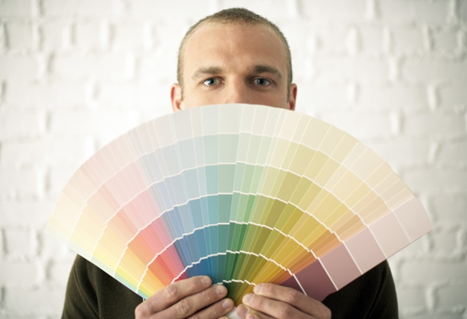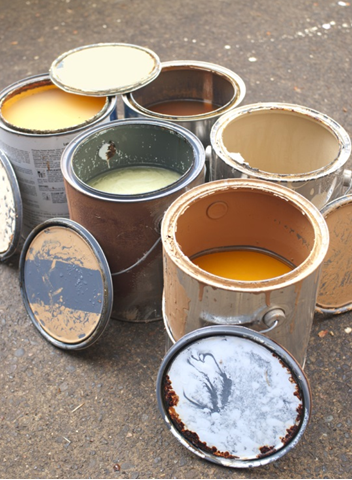Driving through any neighborhood, you can probably tell quite a bit about a house’s inhabitants based on what they feature in their front yards. Those with tire swings and tree houses must have young, adventurous children, while those with lush gardens brimming with bright blooms must care greatly for the environment.
The truth is, you can play the same game with houses’ exterior paint colors: A homeowner puts a great deal of his or her personality into his or her home’s color scheme, whether he or she realizes it or not. If you are looking to switch up your exterior colors, or if you want to find out what your current exterior paint job indicates, read on for more information about the link between character and house color.
Beiges, Taupes, and Whites – This color group comprises the overwhelming majority of homes in America simply because they are incredibly neutral. Many homeowners don’t want to draw attention to their houses, and painting the exterior in a warm neutral like beige, taupe, or white is an excellent way to be ignored. Additionally, these light, earthy hues are incredibly easy to care for, as they tend to show dirt and wear less frequently than brighter colors.
Grays – Electing to paint your house a neutral gray tone nearly guarantees a sophisticated, modern look. Plus, most grays are as timeless as they are versatile. If you hire a high-quality house painter, you should only need to touch up your gray exterior coat every decade or so while you experiment with different accent colors for your front door and window trim.
There are far more than 50 shades of gray, but grays usually come in one of two varieties: warm or cool. Warm grays usually have a slight green or yellow tint, like Benjamin Moore’s Sag Harbor gray. Cool grays are either darker in tone or tinged with blue, like ICI’s gray hearth or Sherwin Williams’s peppercorn gray, respectively.
Blues – Blue is a quintessential American house color. From dazzling aqua to stoic navy, American homes have displayed blue exteriors for centuries — and it’s easy to see why. Blue straddles the line between neutral and vivid, which makes it a perfect choice for homeowners who aren’t ready to commit to a more flamboyant color.
Generally, diminutive homes have more freedom when it comes to blue hues; brighter colors are more pleasing in smaller doses. Still, large homes look good in blue as well, but homeowners with quite a bit of surface area should opt for darker, deeper tone, like needlepoint navy from Sherwin Williams.
Yellows – There is a dividing line amidst the category of exterior yellow paints, and that line separates darker, paler yellows from more light, vivid hues. The first style, which leans toward golds and mustard yellows, veer close to the beige and white category, meaning they can look drab in certain lighting. However, brighter, more vibrant yellows can create a cheery atmosphere for the entire neighborhood.
Yellow is a tricky color to master, and many homeowners settle for washed out, pale yellow for fear of paints that may become cloying in time. If you are interested in a yellow exterior, you may want to talk with an exterior expert to find the right hue for you.
Reds – Red is one of the most eye-catching colors in the rainbow; in fact, plenty of studies indicate that red profoundly influences human behavior. Thus, using red as an exterior paint color is both daring and dangerous. The right tones may make a home look important and respectable, like the red brick Victorian houses admired the world over. However, reds that are too bold may appear aggressive or peculiar. To err on the side of caution, you should seek out muted, deep reds, like dressage red, million dollar red, or cottage red. Brighter hues, such as heritage red, caliente red, or blazer red, should be reserved for accents, like a striking front door.
Greens – Architects and exterior designers are usually hesitant to experiment with green paints for houses simply because green hues can look both blah and bizarre in improper contexts. However, green is incredibly trendy right now for its being synonymous with sustainability. Indeed, when homes find the right shade of green, they appear balanced and peaceful, much like the ideal environment.
Nearly every green hue has a distinct appropriate context. Darker greens, like Benjamin Moore’s Mohegan sage, work best in densely forested regions, where the house matches the color of the surrounding trees. Meanwhile, lighter greens, like Benjamin Moore’s Central Park, look fantastic on modern homes in cities and suburbs.








Speak Your Mind